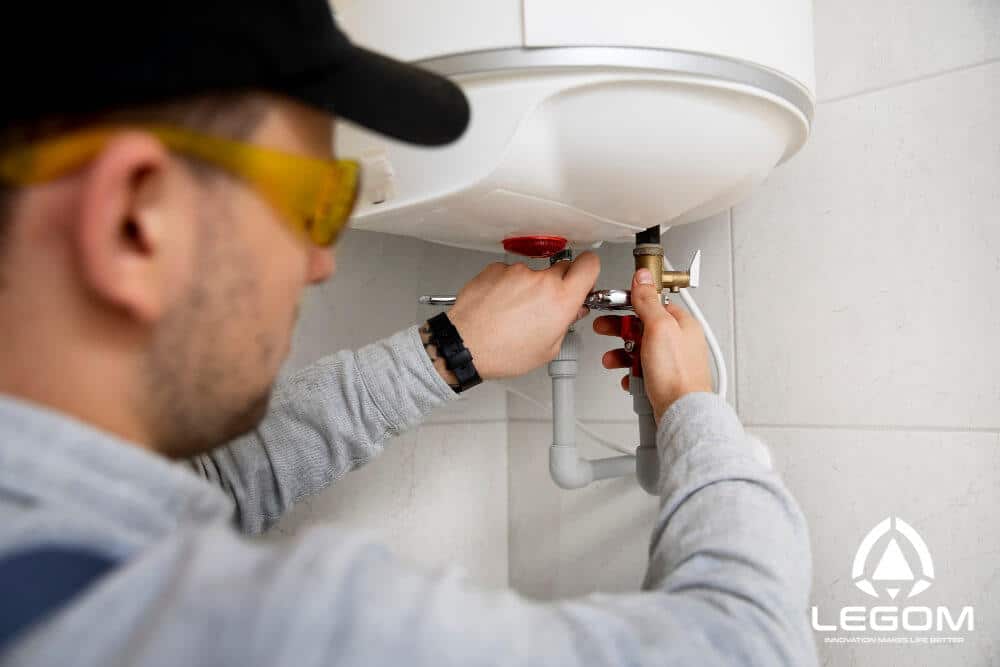
Hot water heater plays a crucial position in modern or traditional home systems. A long time ago, the system ran with simpler components. The main function of this water container is to support many home activities, such as preparing food, cleaning, and providing warm water for bathing, and supplying warm water to underfloor heating pipes.
Contents
The Work of the Hot Water Heater
The principle is just like the other water boiling activities. The difference lies in the pipeline placement. The pipe for the cold water supply is on the bottom. The water source is connected to this. The water flows from the bottom to the upper tank. When it is already full of cold fluid, the burner or heating element raises the temperature to heat.
This heating activity is controlled with a thermostat. It helps to set the temperature to what the homeowner wants. When the temperature changes and it is too cold to heat the room, the thermostat will send a command to the burner to start the heating activity again.
When the temperature has reached the target, the water is ready for distribution. The hot water is used from the top. While the top part is used first, the bottom is filled with cold water that later will be heated.
To sum up, this component is the place to process the water with a high frequency of water circulation. The inlet pipe and outlet pipe are the two pipelines that are responsible for the circulation process.
Hot Water Heater And The Ideal Temperature
To get the maximum benefit of the hot water and to support the activities, about 49°C (120°F) is the suggested temperature. This is not too hot or otherwise. Overheated water will consume more energy than what you need. Adjusting the temperature to the ideal level is strongly suggested.
The system requires at least 30 minutes to heat. Depending on some factors, the time could be longer than that. The water amount, and the starting temperature (water temperature before beginning the heating process), are the two of many factors that affect the duration.
Possible Issues
Troubles or issues could come to any device. To prepare the best, here are the possible problems.
Rusty
It can be seen from the watercolor. The cause is the corrosion of the anode rod. The other possible cause is the inner tank rust. Replace the anode rod.
Noises
If you hear different noises from the usual sound, it might be a heating element problem. To solve this, empty the tank and find out what is with the element. Clean it if there is sediment. If it doesn’t help, replace it with the new heating element component.
Hot Temperature
If instead of getting warm and comfortable air you get hot air, the issue might lie in the heat setting. Readjust the thermostat. Or if the thermostat could not operate the way it should be, replace the thermostat.
Leakage
This is a more difficult issue to know what exactly the cause is. The possible factors of the leakage are the broken TP valve, loose fitting, or corrosion. To solve this, you need to inspect some components carefully, turn the system off, and replace or repair the components.
Slow Room Heating
This might be caused by low pressure. Sediment could block the flow. Flush it carefully. Another possible factor is a problem with the valve.
Conclusion
Hot water heaters are essential for maintaining comfort and efficiency in both modern and traditional homes. They support a variety of daily activities by providing a reliable supply of hot water for cooking, cleaning, bathing, and underfloor heating. Understanding their functionality, ideal operating temperatures, and potential issues can help homeowners maintain their systems more effectively and avoid disruptions. Despite potential faults, the benefits of having a well-functioning hot water heater far outweigh the challenges, ensuring a comfortable and convenient home environment year-round.
